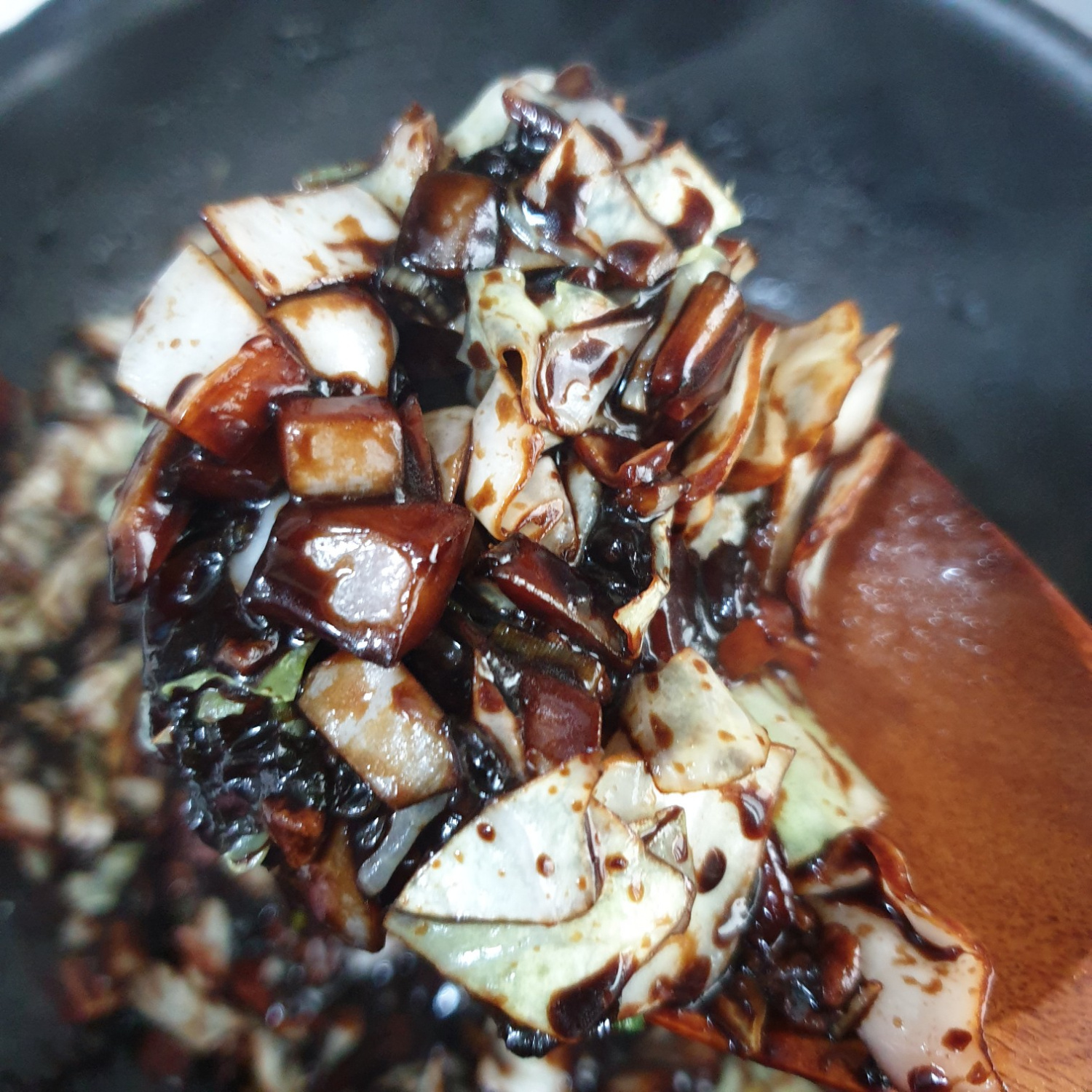Savory Stir-fried Black Bean Sauce: Enjoy Homemade Jjajangbap & Jjajangmyeon
Versatile Black Bean Sauce Recipe: Perfect for Jjajangbap, Jjajangmyeon, and Stir-fries!

Create a delicious black bean sauce using any leftover vegetables in your fridge! With just a jar of chunjang (black bean paste), you can easily whip up a satisfying meal of jjajangbap or jjajangmyeon. It’s also great for stir-fries and will surely become a family favorite for a hearty meal.
Main Ingredients- 1/2 onion, peeled and finely chopped
- 1/8 head of cabbage, washed and finely chopped
- 2 Tbsp minced pork (can be substituted with minced beef or chicken)
- 1/2 green onion, thinly sliced (white parts preferred)
- Vegetable oil, for stir-frying
Seasoning Ingredients- 2 Tbsp chunjang (black bean paste) (use stir-fried chunjang for convenience)
- 1/2 Tbsp sugar (adjust to taste)
- 1/2 Tbsp oyster sauce (for umami)
- 1/2 Tbsp soy sauce (for depth of flavor)
- 2 Tbsp chunjang (black bean paste) (use stir-fried chunjang for convenience)
- 1/2 Tbsp sugar (adjust to taste)
- 1/2 Tbsp oyster sauce (for umami)
- 1/2 Tbsp soy sauce (for depth of flavor)
Cooking Instructions
Step 1
First, prepare the vegetables. Peel the onion and chop it into small pieces, about 0.5 cm. Thinly slice the green onion, focusing on the white parts. If you don’t have minced pork, you can finely chop pork belly or shoulder instead. (Tip: Chopping the vegetables into smaller pieces helps them blend better with the sauce.)

Step 2
Wash the cabbage thoroughly under running water and chop it into similarly small pieces, about 0.5 cm, just like the onion.

Step 3
Heat a deep pan or wok over medium heat and add a generous amount of vegetable oil. Add the minced pork and break it apart as you stir-fry, ensuring it doesn’t clump together.

Step 4
Once the pork starts releasing some of its fat, add the sliced green onions and stir-fry them together. Continue cooking for about 1 minute until you can smell the fragrant aroma of the green onions, allowing the scallion oil to infuse the dish.

Step 5
Now, add the chunjang (black bean paste), the star of jjajang, to the pan. If you are using un-fried chunjang, it’s recommended to add a little more oil and stir-fry the paste in the oil first. This process reduces any bitterness and enhances its nutty flavor. (Tip: If you’re using pre-stir-fried chunjang, you can skip this step.)

Step 6
After adding the chunjang, reduce the heat to low and stir-fry it gently for about 2 minutes, making sure it doesn’t burn. The chunjang should be well-coated with oil, look glossy, and release a rich, nutty aroma.

Step 7
Add the chopped onion to the fragrant black bean sauce and stir-fry together. Cook for about 1-2 minutes until the onions become translucent.

Step 8
Once the onions are slightly softened, add the soy sauce, oyster sauce, and sugar. Stir well to combine the flavors, cooking for another minute to allow everything to meld together.

Step 9
Finally, add the chopped cabbage to the pan and toss everything together until well combined.

Step 10
Now, turn the heat up to high and stir-fry quickly to combine all the ingredients. It’s important not to overcook at this stage to maintain the crispiness of the cabbage. (Tip: Serve generously over warm rice for jjajangbap, or pour over cooked noodles for jjajangmyeon. To make it even more special, top with a fried egg!)



